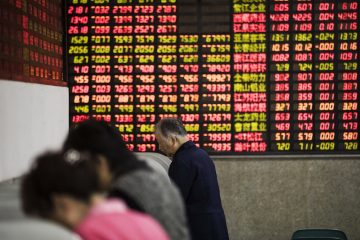There May Be a Smoking Gun in the Lawsuit that Accuses Banks of Rigging the Bond Market

Investors claiming that Wall Street banks manipulated the $ 14 trillion market for U.S. Treasury bonds to investors’ detriment may have found their smoking gun, according to a report Wednesday in the New York Post.
The Post reports that a new lawsuit filed in the Manhattan federal court on Wednesday cites evidence that traders at Goldman Sachs and other banks secretly colluded with each other ahead of regular auctions of federal debt, to maximize the profit they made out of the auctions.
The gist of the suit is that the banks involved fattened their margins by forcing the Treasury to sell at below the market price (forcing it to pay higher yields), and then selling the bonds on to clients at above-market prices (thus cutting the returns that pension funds and others would earn on the bonds). The first defrauds taxpayers, the second defrauds investors. Even though the manipulations may be small, the damages could easily be huge, because of the sheer size of the Treasurys market, and because the alleged abuse took place over eight years.
Read: Free money, numptys and mangling – the forex scandal in its own words
Although the Post didn’t provide details of the chat room evidence, that such evidence exists is the reddest of red flags. It was, more than anything else, the conversations that took place in chat rooms that proved the guilt of traders who rigged the LIBOR benchmark interest rate and a raft of benchmark foreign exchange prices over eight year, from 2007-2015.
The Post‘s previous reporting on the issue had indicated that Goldman Sachs had benefited more than anyone else from the alleged collusion, a potentially embarrassing detail for the Trump administration since Gary Cohn, Trump’s chief economic advisor, was effectively overseeing the responsible division at Goldman at the time. He was the chief operating officer.
Read: U.S. makes its first convictions in Libor scandal
However, in its report on Wednesday, the Post said that the investors’ class action didn’t target one single bank. It said it was focused on Goldman, Morgan Stanley, Royal Bank of Scotland, BNP Paribas and UBS, along with unnamed others.
Both the Justice Department and the Securities and Exchanges Commission are also looking into similar allegations, a fact acknowledged by some of the banks involved in their official disclosures, but neither regulator has yet accused any of the banks of wrongdoing. If wrongdoing is proved, however, it could be particularly expensive for the banks, given that it would represent repeat offending for those that have already settled cases for rigging other markets.
Read: Trump’s Dismantling of Dodd-Frank Would Be 2008 All Over Again
The banks are all what are called ‘primary dealers,’ who buy the bonds directly from the Treasury and resell them to their clients at a pre-determined price. The Treasury allots the bonds according to whoever pays the most.
Banks’ bidding behavior is driven largely by client interest ahead of time—how much investors want, and what they’re prepared to pay. Such details are obviously intended to be confidential, but the complaint alleges that the dealers shared the details of their client interest, giving other cartel members a clearer picture of overall supply and demand, and thus a better chance of manipulating the market.
Goldman Sachs declined to comment to Fortune. None of the other banks mentioned by the Post responded immediately to queries. We will update this story in due course if they do.



